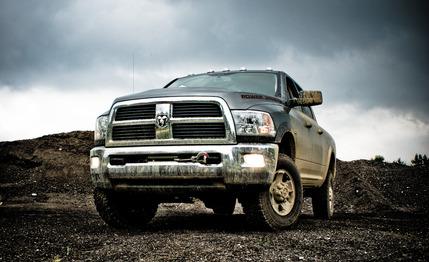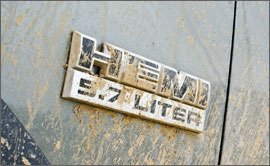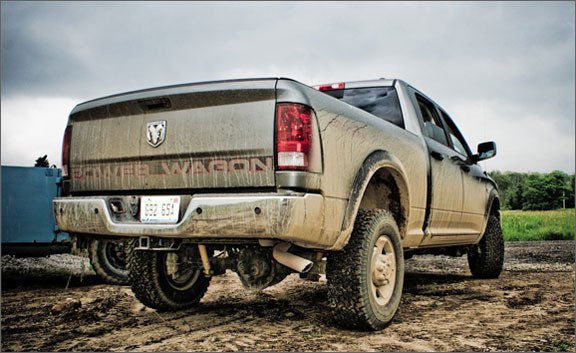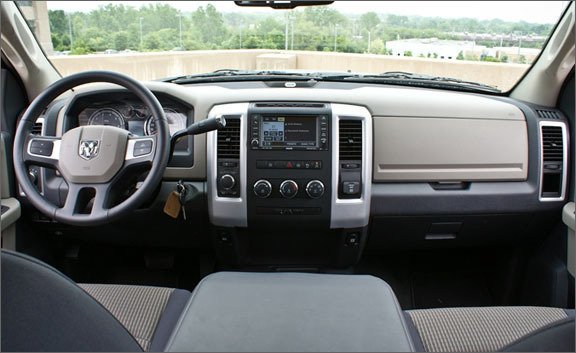 Short Take Road Test
Short Take Road Test
One potential upside to the cratering of the truck market is that it has weeded out all the namby-pamby poseurs promenading around like Real Truck Men. With a volatile fuel market, full-size-truck ownership can look scary to those who don’t really need one. To Real Truck Men whose livelihoods depend on dragging eight-ton trailers from job site to job site, though, fear is as unacceptable a solution as dropping a gooseneck into the trunk of a Nissan Versa.
Of course, “need” is a nebulous term in the automotive sector. Some Real Truck Men need heavy-duty towing capacity because their jobs demand it; others “need” Ford F-150 SVT Raptors because it’s the recommended method of masking deep-seated feelings of inadequacy. It is to sate both of these customers that the Truck Division Formerly Known as Dodge builds the Ram 2500 Power Wagon.
No More Power, Not a Wagon, Awesome Nonetheless
The name “Power Wagon” might be misleading, however, as the truck is not more powerful than other Hemi-powered Rams, nor is it a wagon. The name was worn by one of Dodge’s most legendary vehicles—produced from 1945 to 1968, it was basically a civilian version of a truck built for duty in World War II. However, perched atop 32-inch off-road tires and riding 2.5 inches higher than a regular Ram 2500, today’s Power Wagon might also derive its name from an increase in the driver’s perceived testicular fortitude.

In addition to the higher suspension—it has made entry tricky, even for this 99th-percentile scribe—the Power Wagon includes shock absorbers by Bilstein, locking front and rear differentials packed with 4.56:1 gears, a decoupling front anti-roll bar, skid plates for the fuel tank and transfer case, chunky BFGoodrich off-road tires, and a 12,000-pound Warn winch. Admitting that knobs are for pansies, Ram fitted a floor-mounted transfer-case shifter that takes Real Truck Man strength to muscle into position.
There’s a delightfully retro appearance package comprised of a flat-black hood appliqué and two-tone rocker striping. Clearance lights add nocturnal menace, and the tailgate is tattooed with size-H-for-humongous “Power Wagon” lettering. The package—offered only on 2500-series trucks—costs $6350 and isn’t available with the Cummins diesel. Our tester was further optioned up with two-tone cloth seats for $925 and the $345 Luxury group, which strangely combines a leather-wrapped steering wheel with lighting under the hood, in the glove box, on the sun visors, and in the back seat. Our truck had the $495 Technology group, too, which pairs parking sensors and an upgraded Alpine sound system, as well as an alarm for $150, a bedliner for $245, and a 30-gig hard drive for $800. The as-tested total rang up at $48,740.
On the Road…
The knobbier tires and the higher center of gravity make for squirmier on-road behavior than that of a standard Ram 2500. Skidpad grip—always a selling point with sky-high four-wheelers—topped out at 0.69 g, 0.02 lower than the result for our long-term Ram 2500 diesel. More important, the suspension changes and the heavier wheel-and-tire combo (10 more pounds per corner than our long-termer) impart a great deal more chatter and jitter into the cab over other Rams, for a decidedly harsher ride on rough pavement.
Although the Hemi’s output is unchanged in the Power Wagon, different tuning in the Ram Heavy Duty means it makes 383 hp and 400 lb-ft of torque here compared with the 1500’s 390 hp and 407 lb-ft. The HD truck’s additional half-ton or so of mass slowed the 0-to-60 sprint from the 1500’s 6.4 seconds to 7.8, but what we missed more than quickness was the open-exhaust roar of our departed Ram 1500’s exhaust cutout.

…and into the Wild
For a Real Truck Man experience, we aimed the Power Wagon west and headed to Bundy Hill, an off-road park housed in a former gravel pit just past Michigan International Speedway. We expected to be ridiculed for showing up in a stock, brand-new truck, but the crowds at Bundy Hill loved the Power Wagon. Questions flowed any time we stopped, and sitting idle on a trail to scan our map, we looked up to see a quartet of quad riders with their cell phones out taking pictures. Over the course of the day, we saw enough thumbs ups to give Ebert cramps.
Bundy Hill’s 300 acres gave us the opportunity to test the Power Wagon’s approach and departure angles—35 and 27 degrees, respectively, thanks to the truck’s Hummer H1–like 14.5 inches of ground clearance. The park’s rating system will be familiar to anyone who has ever skied, progressing from green (among other hazards, “rock steps no higher than 12 inches”) to blue square (“a winch would be a plus”) to black diamond (“vehicle, mechanical, equipment, or body damage is likely”) to, finally, double black diamond (“roll over is very common”). Sticking to the simple stuff—the park isn’t really designed for huge trucks you don’t want to scratch—we nevertheless managed to get a decent coat of mud on the Power Wagon. We also found opportunities to exceed the 26-degree break-over angle and let the decoupling anti-roll bar hang the front wheels at full droop. The truck’s capability is impressive, but its size limits its usefulness on tight trails such as those at Bundy Hill, and the barrel-chested, high-domed hood reduces forward visibility, making front-wheel placement much more of a guessing game.

The Raptor in the Room
For Real Truck Men headed into the wilds, there’s already one high-flying, high-profile choice out there. For almost seven grand less than the Power Wagon, the F-150 SVT Raptor’s Baja-tuned suspension, wider track, redesigned front end, and wilder styling make it seem like the more thorough reengineer of the two.
But when your belly’s dragging in the mud, Baja pedigree isn’t going to save you. Should the two trucks find themselves mired side by side, the Power Wagon boasts locking differentials front and rear; the Raptor locks only its rear. And we’re willing to bet that, on some of Bundy Hill’s black or double-black trails, the Ram’s decoupling anti-roll bar might mean the difference between staying upright and “roll over is very common.” Additionally, the Power Wagon can tow 10,300 pounds, whereas the Raptor maxes out at 6000.
It really depends on the kind of off-roading you want to do. The Raptor is in its element pounding the ground at high speeds, where its trick suspension and lenient stability-control system allow for incredible feats. For customers wedded to mud-churning, Midwestern-style off-roading, the Power Wagon’s lofty stance and traction advantage of its dual lockers make it the better choice. Then again, maybe none of these arguments matters. Most Real Truck Men know what brand they’re buying before they even know they’re buying a truck.